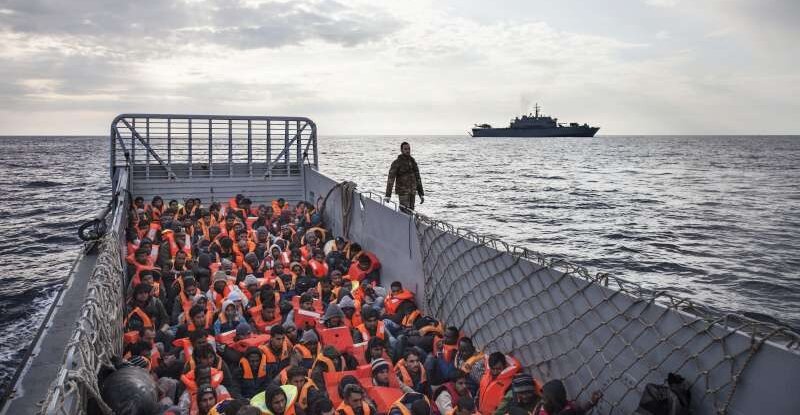What is the difference between human trafficking and human smuggling?
Imagine two different scenarios of someone entering the United States:
A woman is attempting to enter the United States through the Mexican border to be with members of her family who immigrated years back. She hires a smuggler to take her across the border where she hopes to find a job.
A woman is promised a good job in America and the man who promises her the job tells her he will cover the cost for her to enter into the states. After she enters, she finds out that not only is the job not what she was promised, but now she has to pay back the debt she owes to the man who brought her here. The only way for her to make this money, the man claims, is through performing sexual acts to customers.
While these two scenarios hold similarities -- only one is considered human trafficking.
Human trafficking and human smuggling are commonly misconceived as synonyms when in reality, their differences are great. To effectively prepare and implement useful policies addressing both trafficking and smuggling, the differences and similarities must be understood and discussed.
So, what is the difference between human trafficking and human smuggling?
The United Nations defines human trafficking as “the recruitment, transportation, transfer, harbouring, or receipt of persons by improper means (such as force, abduction, fraud or coercion), for an improper purpose including forced labor or sexual exploitation.” Read more about the how human trafficking works here and here.
On the other hand, the definition of human smuggling according to U.S. Immigration and Customs Enforcement (ICE) is the “provision of a service - typically transportation or fraudulent documents - to an individual who voluntarily seeks to gain illegal entry into a foreign country.”
As globalization has increased, particularly over the past decade, the availability of smuggling services for humans has also grown. The main reasons for people seeking smuggling services are conflict and economic instability, but as with human trafficking, the underlying causes are extremely nuanced.
Human smuggling can occur in land, air, or sea, often including inhumane conditions. It is not uncommon for migrants to die in the process of smuggling. According to the UN International Organization for Migration, over 3,000 migrants lost their lives in the Mediterranean sea between January and November of 2017 while fleeing war, conflict or persecution in their home countries.
How do human smuggling and human trafficking intersect?
Once a migrant has been smuggled into their destination, the relationship between the migrant and the smuggler should end. However, in some cases, the migrant is manipulated by the smuggler who holds debts against the migrant and forces them to work. Because the migrants might be in the country illegally, they feel that they cannot report their situation to authorities or obtain the same rights as legal residents. This puts them at a high risk of being forced into a job they wouldn’t have chosen otherwise.
“According to the UN International Organization for Migration, over 3,000 migrants lost their lives in the Mediterranean sea between January and November of 2017 while fleeing war, conflict or persecution in their home countries.”
Additionally, human smugglers are often involved in organized crime rings. The same goes for human traffickers. Therefore, migrants seeking smuggling can be exposed to criminals who can easily take advantage of their vulnerabilities.
Why are these important distinctions to make?
According to the U.S. Department of State, victims of trafficking are victims of a crime under international law. Migrants who are involved in human smuggling are not. They pay their smugglers to move them to a new place. The primary victim of human trafficking is the human. The primary victim of human smuggling is the state to which they illegally enter. But there can be a short jump from human smuggling to human trafficking, where a smuggled human can still end up being victimized.
It is important to properly understand each of these concepts separately and together so that governments and law enforcement can properly handle each case. When human trafficking is confused with human smuggling, trafficking victims may be overlooked. At the same time, law enforcement responsible for handling human smuggling should be educated on human trafficking indicators so they can identify trafficking within human smuggling cases.
As the differences and intersections of human trafficking and human smuggling are uncovered, hopefully there will be an increase in the effectiveness by which law enforcement acts upon prevention and protection of people involved in both. Although there are differences between the two, this is yet another example of the complexities behind human trafficking and many avenues through which a person can end up being trafficked.
About the Author
Anna Stephens is a native Texan pursuing her Master's of Environmental Studies and Sustainability Science at Lund University in Sweden. She has participated in Dressember for 3 years, and plans to continue using fashion as a platform for awareness and eradication of human trafficking. In her spare time, you can find her drinking iced coffee, looking for dogs to pet, or exploring Swedish nature with her friends.

![Migrants were smuggled to Greece, Italy and other European countries for large sums of money, Turkish authorities said [File: Yannis Behrakis/Reuters]](https://images.squarespace-cdn.com/content/v1/5511f9bee4b068878ae651fb/1570382300589-ZU2VEK12O3IDJFMADHVB/fd0bbc056f6344f68e0d8a47183f4bea_18.jpg)


